Bushmiller, Jaxon, Nodell, Ward Named to Eisner Hall of Fame
From the press release:
Bushmiller, Jaxon, Nodell, Ward Named to Eisner Hall of Fame
Online Voting Now Open for Other Nominees
SAN DIEGO - Comic-Con International (Comic-Con), the largest comic book and popular arts event in the United States, announced today that the Eisner Awards judges have selected four individuals to automatically be inducted into the Will Eisner Comic Awards Hall of Fame this summer. These inductees are Ernie Bushmiller, cartoonist on the Nancy newspaper strip for nearly 50 years; Jack Jackson (Jaxon), pioneer underground cartoonist (co-founder of Ripoff Press) and graphic novelist (Commanche Moon); Marty Nodell, Golden Age artist best known as the co-creator of Green Lantern; and Lynd Ward, woodcut artist hailed as a pioneer of the graphic novel (God’s Man).
Past judges have selected two automatic inductees, but this year that number has been expanded to four. “The judges felt that some significant contributors to comics’ history were being consistently overlooked by the regular voters,” notes Jackie Estrada, the Eisner Awards Administrator. “Choosing only two creators to induct was proving too difficult this year. The solution they chose was to single out individuals from four aspects of the medium.”
The judges have also chosen 14 nominees from which voters will select 4 to be inducted in the Hall of Fame for 2011. These nominees are Bill Blackbeard, Chris Claremont, Kim Deitch, Rudolph Dirks, Mort Drucker, Jenette Kahn, George McManus, Dennis O’Neill, Harvey Pekar, Cliff Sterrett, Roy Thomas, Rodolphe Töpffer, George Tuska, and Marv Wolfman. See below for complete bios.
Online voting is now open
To vote, you must be a professional working in the comics or related industries, as a creator (writer, artist, cartoonist, colorist, letterer), a publisher an editor, a retailer (comics store owner or manager), a graphic novels librarian, or a comics historian/educator. Eligible voters can visit www.eisnervote.com to register and then select up to four picks in the Hall of Fame category. The deadline for voting is March 25. Further eligibility information is provided on the Eisner Awards page.
The 2011 Eisner Awards judging panel consists of Comic-Con board of director Ned Cato (geekroundtable.com), librarian Karen Green (Columbia University), comics writer/editor Andy Helfer (The Shadow; Pardox Press), publishing consultant Rich Johnson (previously with DC Comic and Yen Press), and retailer Chris Powell (Lone Star Comics).
The judges were assisted by students at Vermont’s Center for Cartoon Studies, who made suggestions for Hall of Fame nominees and provided background information on the people they suggested.
The online voting process is being conducted by Mel Thompson and Associates, the official tabulators of the Eisner Awards. Submissions are currently being accepted in the other Eisner categories; the deadline is March 4. The nominees for these categories will be announced in mid-April.
The Will Eisner Comic Industry Awards are underwritten by Comic-Con, the nonprofit educational organization dedicated to creating awareness of and appreciation for comics and related popular art forms, primarily through the presentation of conventions and events that celebrate the historic and ongoing contributions of comics to art and culture.
The Eisner Awards will take place at a gala awards ceremony to be held on July 22 at the Hilton San Diego Bayfront Hotel.
2011 EISNERS HALL OF FAME |
|
JUDGES’ CHOICES
|
NOMINEES
|
Judges’ Choices
Ernie Bushmiller
Iconic newspaper cartoonist
Ernie Bushmiller got his start as a cartoonist when he took over the Fritzi Ritz comic strip in 1925. In 1933, he added Fritzi’s niece Nancy to the strip. The character became so popular that Ernie changed the name of the strip to Nancy in 1938 and added Sluggo Smith to the cast of characters. Distributed by United Feature Syndicate, Nancy also was reprinted in Tip Top Comics and Sparkler Comics as “Nancy and Sluggo.” Bushmiller continued to do the newspaper strip (with the help of various assistants) until his death in 1982 at the age of 77. The National Cartoonists Society honored Ernie (who was one of the founding members of NCS in the 1940s) with the 1976 Reuben Award for Cartoonist of the Year.
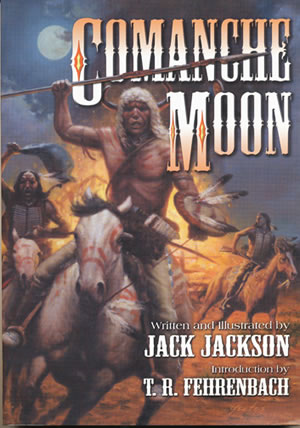
Jack Jackson
Underground Comix Pioneer
Jack Jackson (1941–2006), aka “Jaxon,” created, wrote, drew, and self-published what comics historians consider one of the first underground comix, God Nose. He was art director at Family Dog and a co-founder of Rip-Off Press. He contributed to such underground anthology titles as Skull, Slow Death, and Tales of the Leather Nun. Jaxon introduced historical comics to the underground movement, which he expanded on in his next phase of work, the innovative Comanche Moon series (1975–1978) for Last Gasp. He continued chronicling his home state’s history via award-winning graphic novels El Alamo, Los Tejanos, Indian Lover: Sam Houston and the Cherokees, and Lost Cause.
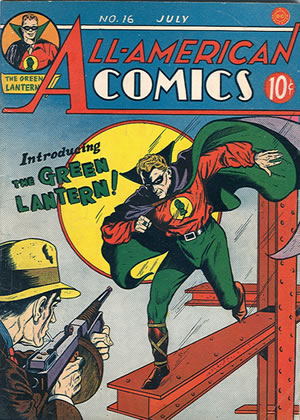
Martin Nodell
Golden Age artist
Marty Nodell co-created the Green Lantern in 1940 with writer Bill Finger. He drew Green Lantern in various titles until leaving DC in 1947 to work for Timely Comics. At Timely he drew Captain America, The Human Torch, and the Submariner, among others, until 1950 when he left the comics business for good. Nodell went into advertising illustration in the early fifties and had a very successful career (including creating the Pillsbury Doughboy) until his retirement in 1976. He died in 2006.
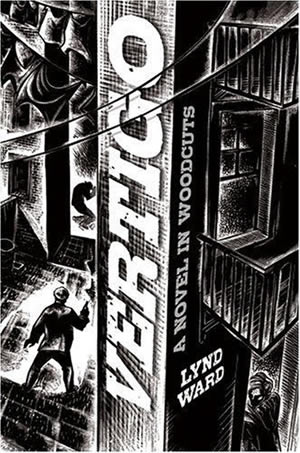
Lynd Ward
pioneer graphic novelist
Lynd Ward produced six wordless graphic novels in wood engravings from 1929 to 1937. His first novel, God’s Man, was followed by Madman’s Drum, Wild Pilgrimage, Prelude to a Million Years, Song Without Words, and Vertigo. All six books have been collected in a two-volume slip-cased edition by Library of the Americas.
Nominees
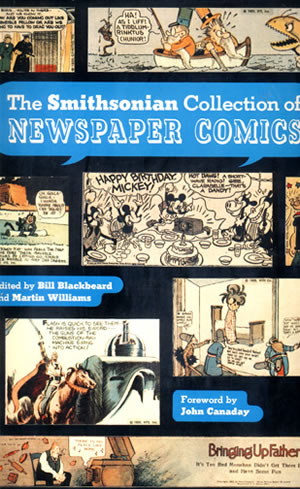
Bill Blackbeard
Comics historian/archivist
Writer/editor/archivist Bill Blackbeard has contributed to over 200 collections of comic strips. The one that tops the list is The Smithsonian Collection of Newspaper Comics, published in 1977, co-edited by Blackbeard. Since its release this book has been consistently referred to as the perfect introduction to comic strip art. In the 1960s Blackbeard formed a nonprofit organization called the San Francisco Academy of Comic Art. He began collecting discarded newspapers from California, later extending his rescue operation nationwide. The collection (now housed at Ohio State University’s Cartoon Research Library) consists of clipped comic strips, whole comics pages, and complete Sunday sections. These archives have been used for award-winning collections of Popeye, Krazy Kat, Yellow Kid, and other classic newspaper strip reprints.
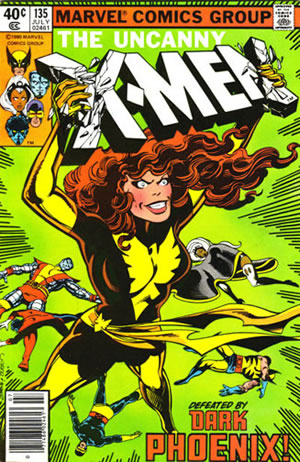
Chris Claremont
X-Men comics writer
Chris Claremont is best known for his work on Marvel Comic’s X-Men series, first for his initial unbroken 17-year run on The Uncanny X-Men and then the launch of X-Men, whose first issue sold over 7.6 million copies. The story arc “Dark Phoenix” paved the way for the reinterpretation of superhero mythos throughout the comics industry. The feature film X-Men as based largely on material created by Chris, while X-Men: The Last Stand is grounded in the Dark Phoenix saga. The forthcoming second Wolverine movie is based largely on the graphic novel Wolverine by Chris and Frank Miller.
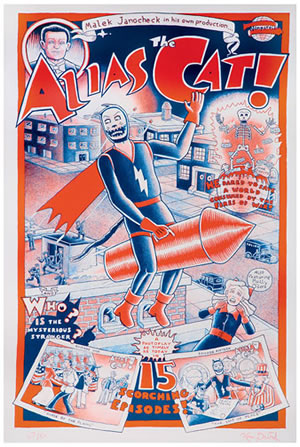
Kim Deitch
Underground comix pioneer
Art Spiegelman has called Deitch “the best kept secret in American comics.” Deitch’s most prevalent recurring character is Waldo the Cat, a fictional 1930s-era animated cat. Waldo stars in the seminal Boulevard of Broken Dreams (an issue of which received an Eisner award in 2003), Shroud of Waldo, Alias the Cat, and various other strips and serials. Deitch has also released Shadowlands and Deitch’s Pictorama, a collaboration with brothers Simon and Seth. Deitch has also been a publisher, was a co-founder of the Cartoonists Co-op Press, and has taught at the School for Visual Arts in New York.
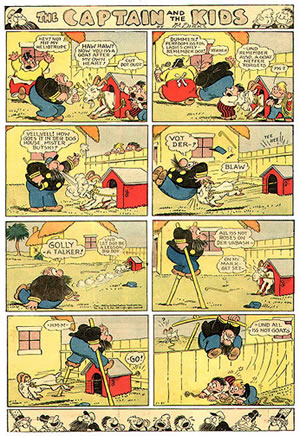
Rudolph Dirks
Pioneer Comic strip creator
In 1897 Rudolph Dirks‘ editor at the New York Journal asked him to create a strip that could compete with the popularity of The Yellow Kid by Outcault, which was published in a rival newspaper, The New York World. Dirks came up with The Katzenjammer Kids, which was one of the first strips to use a permanent cast, a frame sequence, and speech balloons. After a legendary court battle with publisher William Randolph Hearst, Dirks acquired the right to take his characters elsewhere, but the use of the title remained the sole right of the newspaper. Dirks resumed the strip in the New York World under the title Hans und Fritz, later renamed The Captain and the Kids. Dirks retired in 1958 and died in 1968 at the age of 91.
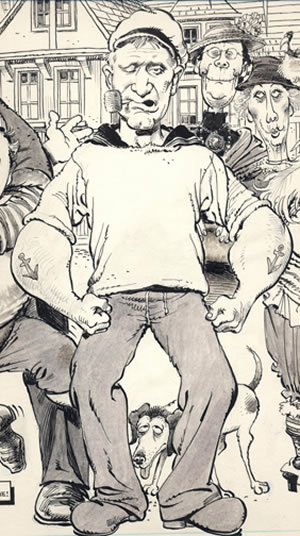
Mort Drucker
MAD caricaturist
After freelancing on mystery, war, and space titles for DC and Atlas during the 1950s, Mort Drucker found his way to MAD magazine, where he specialized in movie and television satires and parodies for nearly 50 years. At the same time, Drucker pursued assignments in commercial art, doing animation for television, movie posters, and covers and illustrations for magazines. He also remained active for DC, illustrating among others Sgt. Rock, Adventures of Bob Hope, and Jerry Lewis. Between 1984 and 1986, he drew the syndicated daily Benchley in collaboration with Jerry Dumas. He is currently retired.
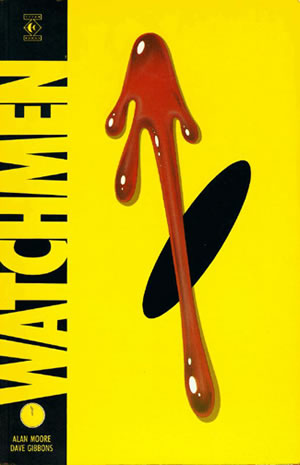
Jenette Kahn
DC Comics editor-in-chief and publisher, 1976-2002
In 1976, at the age of 28, Jenette Kahn became publisher of DC Comics. Five years later, she became president and editor-in-chief of DC. She was the youngest person at Warner Brothers/Time Warner to become president of a division, and the first woman. Under her aegis, DC introduced the graphic novel to America and broke new ground with such publications as The Dark Knight Returns, Watchmen, V for Vendetta, and Sandman. Kahn also broke ground by championing and implementing extensive rights for creators in an industry where there were none.
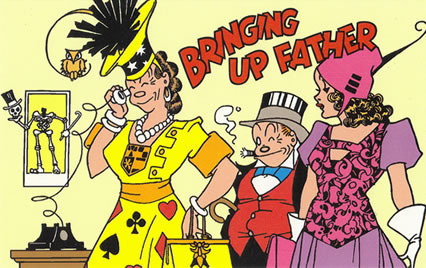
George McManus
Comic strip creator
In 1904, McManus created The Newlyweds, about an elegant young couple and their baby, Snookums. This series, the first family strip in an American newspaper, became quite popular. He started up several other daily comics as well, including Rosie’s Beau and Spareribs and Gravy, but his big hit was Bringing Up Father. This comic about the Irish nouveau riche Jiggs and his wife Maggie, inspired several movies—in four of them, McManus himself played the role of Jiggs. McManus, who died in 1954, influenced a great number of artists, including Herge and Joost Swarte.
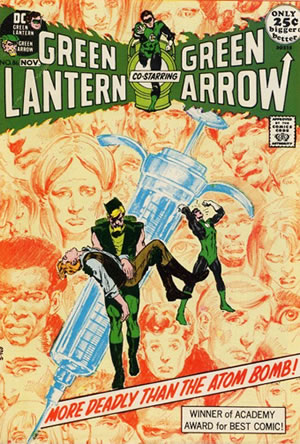
Dennis O’Neill
DC writer/editor
Dennis O’Neill began his writing career as a newspaper reporter. Intrigued by the creative revival of comics in the mid-1960s, he went to New York to become Stan Lee’s editorial assistant at Marvel Comics. Next, he did freelance writing at Charlton Comics under editor Dick Giordano. When Giordano moved to DC Comics in 1967, he brought O’Neill with him. In 1968 editor Julius Schwartz asked Dennis to revamp Batman. Dennis and artist Neal Adams took the character back to his roots and, adding sophistication and their own unique vision, created the version of Batman that has been an inspiration for the Warner Bros. films and the current comics. In 1970, Dennis again collaborated with Adams and Schwartz to produce the Green Lantern/Green Arrow series that first brought him into national prominence. This series earned praise, awards, and media attention for its groundbreaking introduction of social concerns, such as racism, drug addiction, environmental dangers, and Native Americans’ problems.
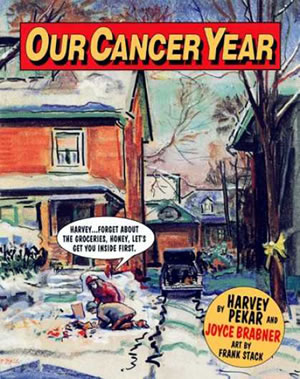
Harvey Pekar
Premier reality-based comics writer
The first issue of Harvey’s American Splendor appeared in 1976. Between then and 1991 he self-published 16 issues, drawn by a variety of artists, most notably R. Crumb and Frank Stack. Subsequent issues were published by Dark Horse and Vertigo. His book with Joyce Brabner Our Cancer Year garnered numerous awards, and Harvey became somewhat of a celebrity by appearing on the David Letterman show. In 2003 a film version of American Splendor brought Harvey back into the spotlight. In addition to his autobiographical works, in recent years Harvey wrote a number of other nonfiction graphic novels. He died in 2010.
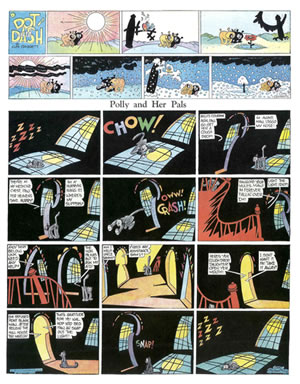
Cliff Sterrett
Comic Strip creator
Cliff Sterrett created of the first comic strip starring a heroine in the leading role, Polly and her Pals. The strip was initially published starting in 1912 in the daily comics page of the New York Journal. A year later, it also became a Sunday page and a four-color supplement to the New York American. Starting in the 1920s, Sterrett used cubist, surrealist, and expressionist elements in his artwork, which made him an inspiration to many others. Sterrett handed over the daily Polly strip to other artists in 1935 to concentrate wholly on the Sunday Polly strip, which he drew until his retirement in 1958. He died in 1964.
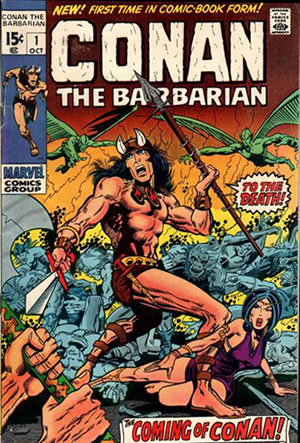
Roy Thomas
Marvel writer/editor, fanzine pioneer
Roy Thomas helped Jerry G. Bails found Alter Ego, the first real comic book fanzine. From 1965 to 1980 he wrote and edited for Stan Lee at Marvel (X-Men, Avengers, Invaders, Conan the Barbarian, Red Sonja et al.) and served as editor-in-chief from 1972 to 1974. From 1980 to 1986 Roy wrote for DC, mostly titles he co-created such as All-Star Squadron and Infinity, Inc. In 1999 Roy revived Alter Ego for TwoMorrows Publishing; its 100th issue appears in March 2011. Roy has edited All-Star Companion (four volumes) and written several mainstream hardcovers on comics. Roy is currently writing Conan: Road of Kings for Dark Horse, editing Alter Ego, and working with Stan Lee on the Spider-Man newspaper comic strip.
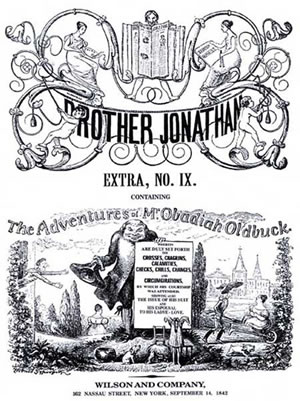
Rodolphe Töpffer
Nineteen-century comics pioneer
Swiss writer/artist Rodolphe Töpffer (1799–1846) is credited with creating “picture-stories” that are considered the first in the comics genre. He created six titles: Histoire de M. Jabot, Monsieur Crépin, Les Amours de M. Vieuxbois, Monsieur Pencil, Le Docteur Festus, Histoire d’Albert, and Histoire de M. Cryptogame. After Töpffer’s death in 1846 the books were anthologized in the series of volumes titled Histoires en Estampes. Töpffer’s picture-stories influenced many of the early comic artists, such as Chrstophe and Wilhelm Busch. His M. Vieuxbois, translated as Obadiah Oldbuck, was the first comic book ever published in America, in 1842.
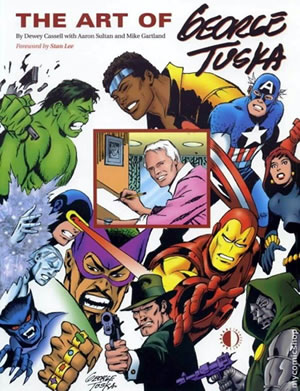
George Tuska
Golden/Silver Age artist
Artist George Tuska joined the Iger/Eisner Studio in 1939, where he worked on stories for a variety of titles, including Jungle, Wings, Planet, Wonderworld, and Mystery Men. In the 1940s, as a member of the Harry “A” Chesler Studio, he drew several episodes of Captain Marvel, Golden Arrow, Uncle Sam, and El Carim. After the war, he continued in the comics field with memorable stories for Charles Biro’s Crime Does Not Pay, as well as Black Terror, Crimebuster, and Doc Savage. He also became the main artist on the Scorchy Smith newspaper strip from 1954 to 1959. In 1959, he took over the daily and Sunday Buck Rogers pages, which he continued until 1965 (daily) and 1967 (Sunday). In the late 1960s, Tuska started working for Marvel, where he contributed to Ghost Rider, Planet of the Apes, X-Men, Daredevil, and Iron Man. He continued drawing superhero comics for DC, including Superman, Superboy and Challengers of the Unknown. In 1978, along with José Delbo, Paul Kupperberg and Martin Pasko, Tuska started a new version of the daily Superman comic. Tuska worked on this series until 1993.
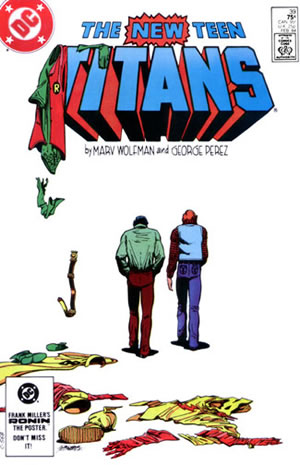
Marv Wolfman
DC/Marvel writer
Marv Wolfman has created more characters that have gone on to television, animation, movies and toys than any other comics creator since Stan Lee. Marv is the writer-creator of Blade, the Vampire Hunter, Bullseye (the prime villain in the 2003 movie Daredevil), and the New Teen Titans, as well as the writer of DC’s big 50th anniversary series Crisis on Infinite Earths in 1985. Marv also writes novels; his adaptation of Superman Returns won the industry’s “Scribe” award. His nonfiction book Homeland, The Illustrated History of The State of Israel won the National Jewish Book Award among others.
Related posts:
- Comic Book Hall of Fame Continues Campaign Courtesy of Ultimate Comics Group
- Marvel Congratulates The 2010 Eisner Award Winners!
- 2009 Joe Shuster Award Winners Announced This Weekend at the University of Toronto’s Innis Town Hall
- Eisner Awards Now Accepting Submissions for 2011
- Fame: Danica Patrick the Comic Book in Stores This Week

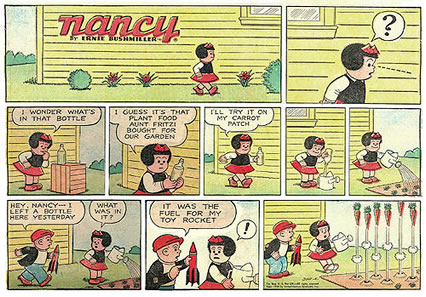


Comments
One Response to “Bushmiller, Jaxon, Nodell, Ward Named to Eisner Hall of Fame”Trackbacks
Check out what others are saying about this post...[...] This post was mentioned on Twitter by Comicator, Edward Kaye. Edward Kaye said: Bushmiller, Jaxon, Nodell, Ward Named to Eisner Hall of Fame http://bit.ly/gDSnOI [...]